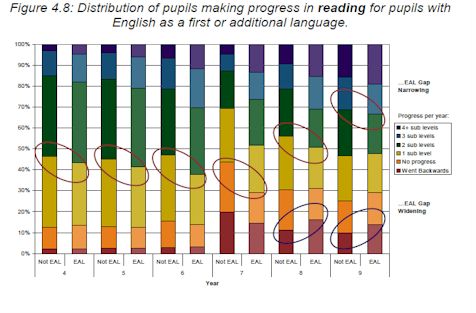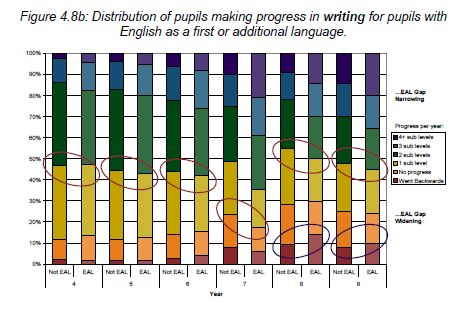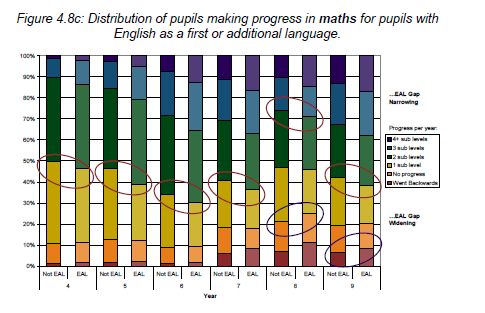Research & Statistics > EAL Research Summaries
How do pupils progress during Key Stages 2 and 3?
How do Pupils Progress During Key Stages 2 and 3? presents statistical analysis of pupils’ progress in reading, writing and maths during years 3-9, based on a sample of termly teacher assessments for over 70,000 pupils in 10 Local Authorities. The main issues addressed are when most progress is made, who makes most progress, how termly progress adds up to expected threshold levels of achievement, and what progress through National Curriculum Key Stages 2 and 3 looks like empirically – the patterns and pathways actually followed by pupils.
Key Findings:
Pupils with English as an Additional Language (EAL) make more sub-levels of progress than other pupils in all years in all three subjects. This represents "catching up" with other pupils, who tend to have higher prior attainment levels at Key Stage 1. The biggest difference is in reading, with smaller differences in writing and maths.
Most of the differences between pupils with and without EAL occur in the proportions making 2 or more sub-levels of progress, rather than at the margin between any progress and no progress. Pupils with EAL tend to be more likely to make more than one sub-level of progress per term, but in years 8 and 9, this becomes mixed with higher proportions dropping backwards over the year.



Reference:DCSF-RR096
Published: March 2011